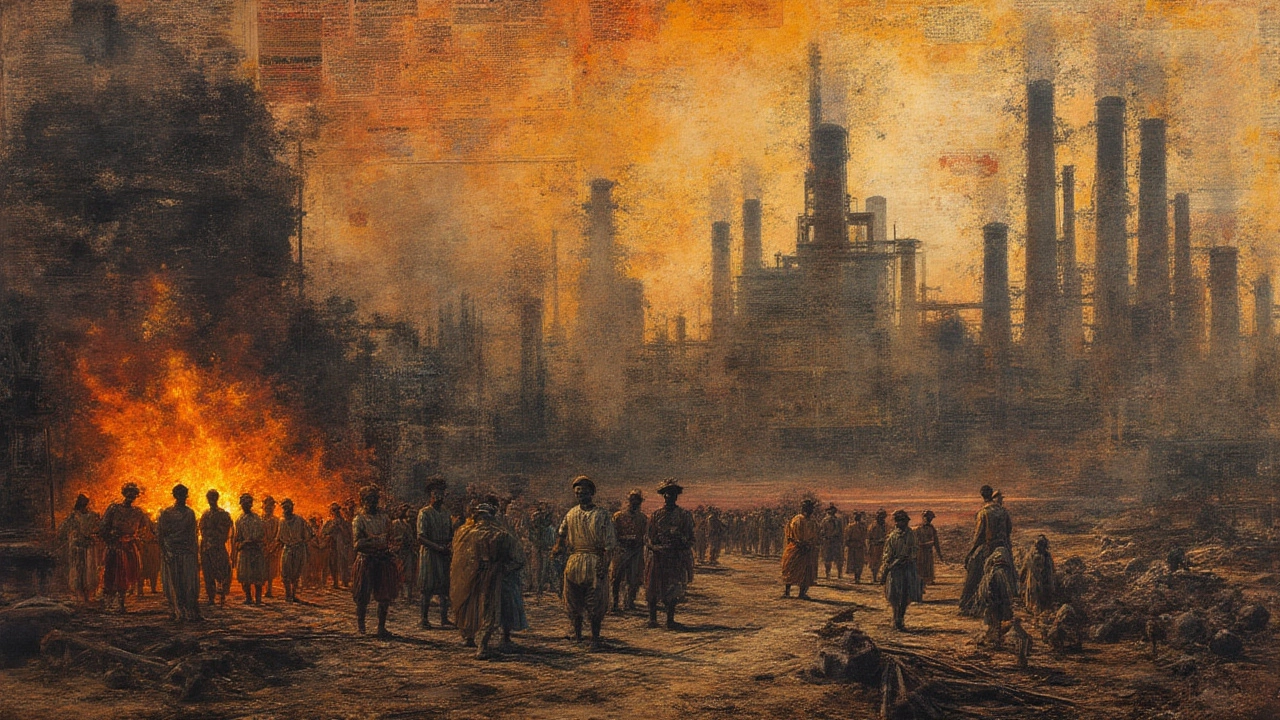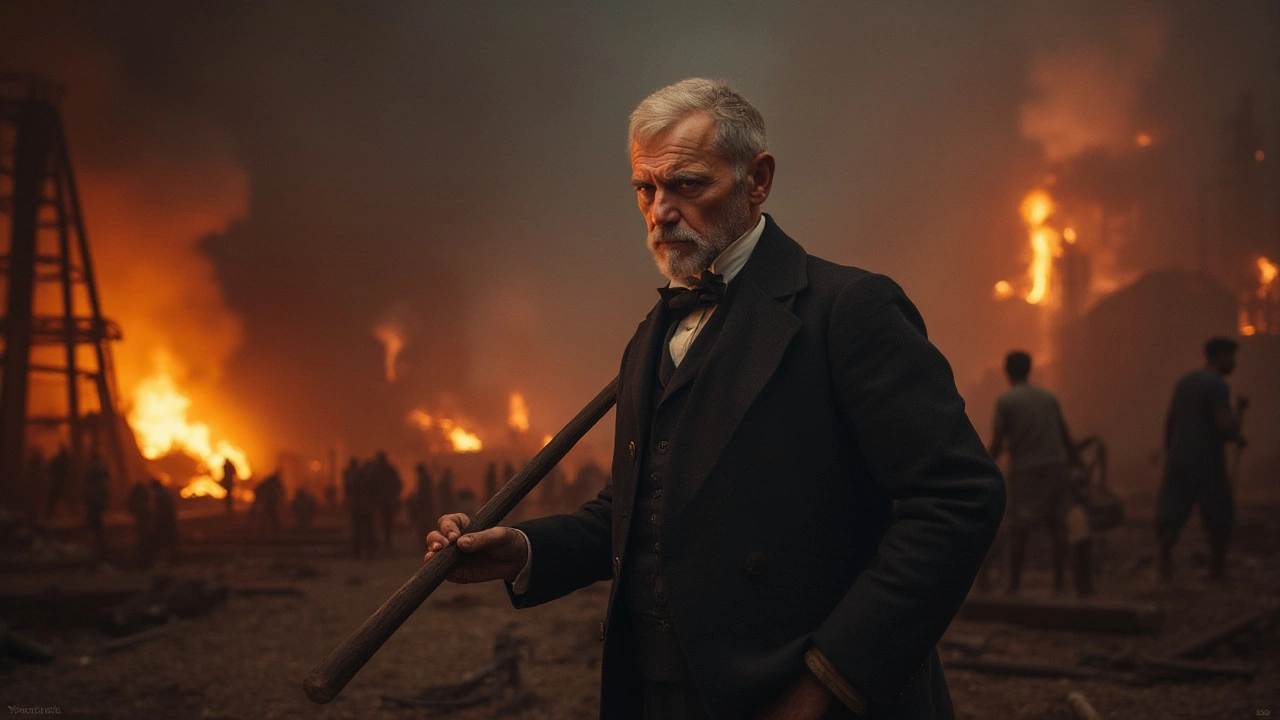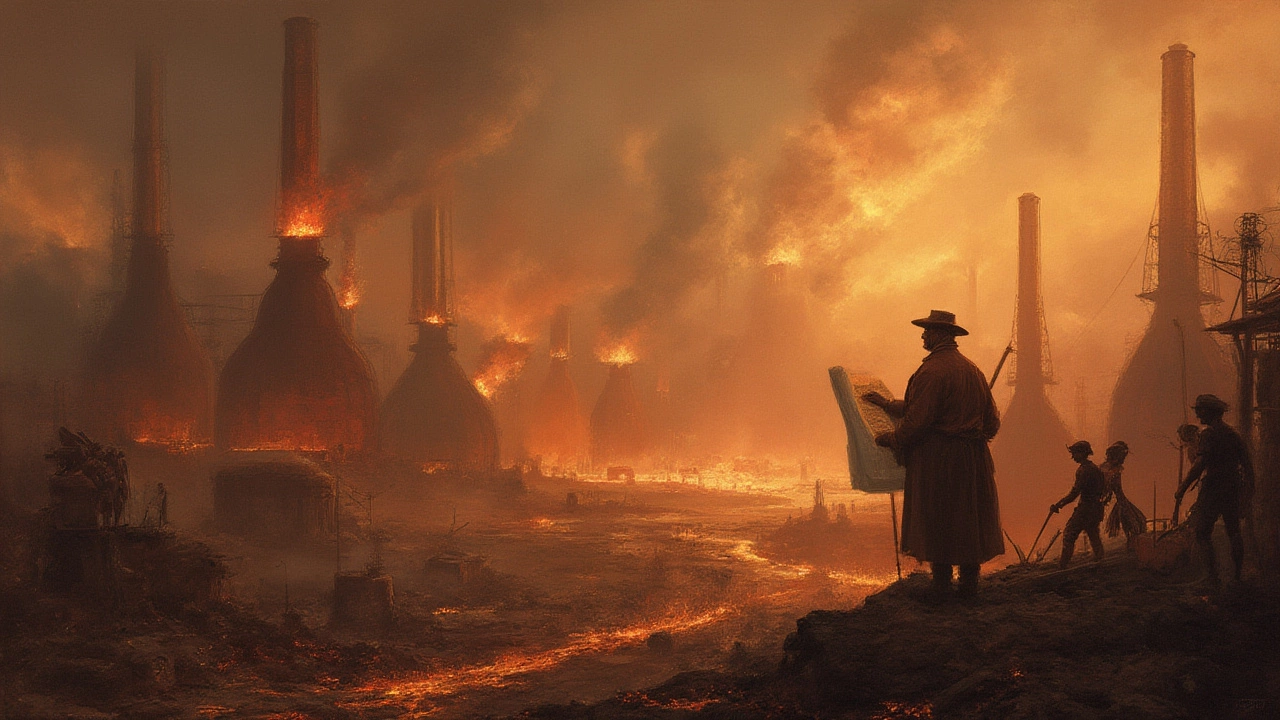If you grab a fork, walk across a bridge, or watch a skyscraper rise in a city, you’re connected to a story most people have never really thought about. Steel is everywhere, but who actually sparked the revolution that made it possible? The name that always rises above the rest is Andrew Carnegie. The thing is, Carnegie’s legacy isn’t just about making a fortune; it’s about upending the world’s biggest industries, facing brutal choices, and changing how people lived—forever. Steel wasn’t just a hot metal in a furnace; it became the backbone of modern life, and Carnegie was the guy who saw, before most, the future shimmering in molten steel.
The Early Days: Origins of the Steel Boom
Andrew Carnegie wasn’t born with a silver spoon—far from it. This guy came from a dirt-poor family in Dunfermline, Scotland. When things got tough, his parents packed up and sailed to America in 1848. Imagine being a teenager, broke, starting over in Pittsburgh, and hustling at a cotton factory just to stay afloat. By his twenties, Carnegie was already dabbling in telegraphs and railroads—a bold move at a time when people were still figuring out how to run trains without them falling apart.
The United States was exploding in population, cities were swelling, and the world needed bridges, rails, and new kinds of buildings. Traditional iron just couldn’t handle the pressure anymore—it was too heavy, brittle, and expensive. Enter steel: lighter, stronger, and way more flexible. People wanted steel, but making it was a slow, messy process that didn’t scale. That actually brings us to one of the biggest industrial secrets of the 19th century: the Bessemer process. Henry Bessemer, a British inventor, came up with a way to turn molten pig iron into steel by blowing air through it. Sounds simple now, but back then? Revolutionary.
When Carnegie caught wind of this, he knew it was his golden ticket. He went all-in, building plants that cranked out steel faster and cheaper than anyone else. And he didn’t hold back: hiring top-notch engineers, reinvesting profits, and even borrowing millions—true high-stakes stuff. One of his boldest moves was building the Edgar Thomson Steel Works outside Pittsburgh in 1875. People thought he was taking a dangerous bet because he opened right after a financial panic, but he proved everyone wrong almost overnight.
By hustling, innovating, and taking wild risks, Carnegie started pushing the U.S. to the front of the global steel race. He wasn’t interested in being second to anyone, and his story was just getting warmed up.
Andrew Carnegie: From Laborer to Steel Tycoon
Now, most people see “Carnegie” and just think of money and libraries, but there’s serious grit behind the name. Andrew used every trick in the book: networking with railroad magnates, squeezing suppliers, and bargaining for every nickel. He even took spying seriously—he’d have experts sneak around to rival mills just to “borrow” the best techniques. Carnegie was relentless about learning.
If you’re wondering what really pushed him ahead, it was his obsession with efficiency. He’d slash costs by investing in the latest machinery, finding clever ways to save fuel, and even recycling waste from the steel process. Instead of buying raw materials from others, he bought his own iron ore mines, railroads, and coalfields. With everything under his control, he could churn out steel faster and at a lower cost than anybody else. His number one rule? “Cut costs, or die.” That motto drove everyone, from top managers to regular guys sweating on the factory floor.
But here’s something a lot of history books gloss over—the rough edge. The world Carnegie built came at a price. He paid attention to numbers more than faces. In 1892, the infamous Homestead Strike saw workers and armed guards clash, ending with deaths and national headlines. Carnegie himself was in Scotland, but his company’s iron grip on labor stoked a lot of anger. This darker side of the steel boom still gets people debating Carnegie’s legacy even today.
If you look beyond the newspaper drama, you’ll find he also poured jaw-dropping sums into philanthropy. He gave away nearly 90% of his wealth, helping build thousands of libraries, universities, and foundations. Maybe it was guilt, maybe pride, or maybe just the joy of shaping the world—either way, his empire had a lasting effect both in steel and in stone buildings across the planet.

The Big Impact: How Steel Changed Everything
Before steel, the world looked a lot flatter and woodier. Bridges rarely spanned huge rivers, railroads twisted around hills since tunnels were too tough to carve, and buildings stayed short so they wouldn’t tumble down. When steel became cheap, overnight everything got taller, stronger, and faster. America’s cities sprouted up and out; skyscrapers popped up like mushrooms after rain. The Brooklyn Bridge, the first true steel suspension bridge, opened in 1883 and blew people’s minds—it simply wasn’t possible just a decade earlier.
Steel also let trains get longer, move quicker, and haul massive loads. The rails Carnegie sold helped knit together American cities from the Atlantic right out to the Pacific. Without his approach to mass production, America wouldn’t have become the land of scale and ambition so fast. Think about how highways, shipping, even farming tools all changed thanks to his steel. Modern shipping containers, safe cars, reliable appliances—trace those roots, and you’ll bump into that Pittsburgh steel dynasty.
Carnegie’s reach went way beyond the U.S. The techniques his plants used got picked up in Europe, Asia, and Latin America, setting off a wave of factories from England to India. And his playbook? It became the model for giant industrial companies in everything from oil to tech. Andrew Carnegie set the bar: own your supply, keep costs low, innovate or go bust. Even Silicon Valley gurus still quote his business philosophy.
Here’s a fun fact: The Home Insurance Building in Chicago—regarded as the world’s first skyscraper—relied almost entirely on steel frames. No longer did builders need to stack brick after brick, worrying about the weight crushing the bottom floors. That steel skeleton made cities reach for the clouds.
“The man who dies thus rich dies disgraced,” Carnegie wrote in his book The Gospel of Wealth. This punchy line caught a generation’s imagination, summing up his radical belief in giving back. But not everyone cheered. Critics questioned if his donations erased the hardship his workers lived through. The debate about how wealth should be used still rages on, but there’s no denying the face he put on modern capitalism.
The Techniques and Tactics That Redefined an Industry
Let’s get down to nuts and bolts: Carnegie didn’t just follow blueprints, he rewrote them. For anyone fascinated with how things get done, his approach is like a master class in tough, hands-on management. Carnegie made big gambles based on new science. He was one of the first to use the open-hearth process, which made even purer steel than Bessemer’s original method. He sent his engineers to Europe for months on end, studying every new invention. If a rival had an edge, he wanted to turn it into his own advantage by the end of the week.
One thing you’ll love: he pioneered new ways to keep plants running non-stop. Carnegie realized every minute a furnace sat idle, it hemorrhaged money. So he paid bonuses to managers who broke records and fired people who slacked. Sometimes, that meant brutal hours for workers, which remains a tough part of his legacy. But when he made improvements, he didn’t keep them secret. He pushed suppliers and even his competition to raise the bar every year, making Pittsburgh the steel capital of the world.
- He standardized parts and processes, so repairs could be made fast.
- He rotated managers between jobs to keep fresh eyes on old problems.
- He cut shipping costs by negotiating huge deals with railroads he partly owned.
- He kept precise records, using data in ways that almost look like early data science (without computers, just lots of notebooks).
But what’s maybe wildest: Carnegie often paid his top people with stock, so if the company won, they all shared the rewards. That sense of ownership pushed some of the era’s best talent to stick with him for decades. Tough love—sometimes too tough—but nobody can say he didn’t drive his crew hard toward record-breaking results.
“Mr. Carnegie stood as the symbol of the new age in industrial America, where wealth was no longer inherited, but made in the smoky mills and bustling boardrooms.” - David Nasaw, biographer of Andrew Carnegie

Past the Myths: The Real Father of Steel
Lots of names get thrown around—Bessemer, Kelly, even old-school ironmasters—but when it comes to reshaping the world and defining what ‘steel industry’ means, Carnegie stands front and center. He grabbed new science, powered hard-nosed business tricks, and didn’t mind getting his hands dirty (or sooty) to keep moving ahead. He wasn’t perfect—far from it. But his mix of visionary risk, efficiency obsession, and raw ambition? That’s why when you walk under a steel girder or ride a fast train, the story echoes back to Andrew Carnegie.
To really see his fingerprints, pick up a map: trails of rails, towers of steel, cities lined with libraries and halls built from his fortune. The echoes of his choices shape economies and debates to this day. Was he a ruthless capitalist? A generous giver? Both, really. That’s why the name “father of the steel industry” might be a little simple; he was more like the dynamo powering a revolution. The best tip to take from his story? Don’t just focus on invention or leadership—Carnegie showed that turning big ideas into daily reality is what changes the future.
Next time you admire a bridge or step into a tall building, you’re living in a world built on his vision—sometimes dazzling, sometimes controversial, and always real.

